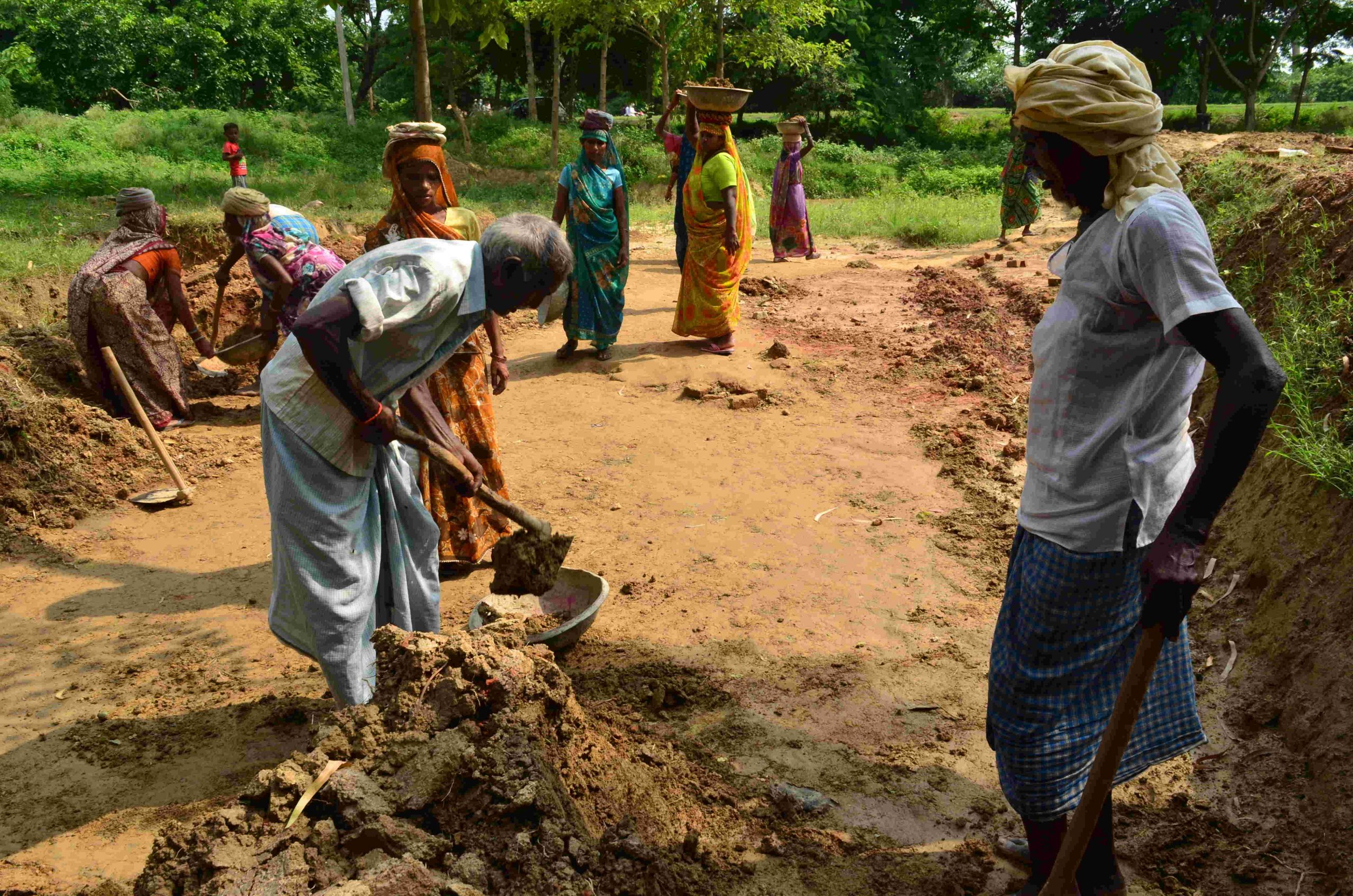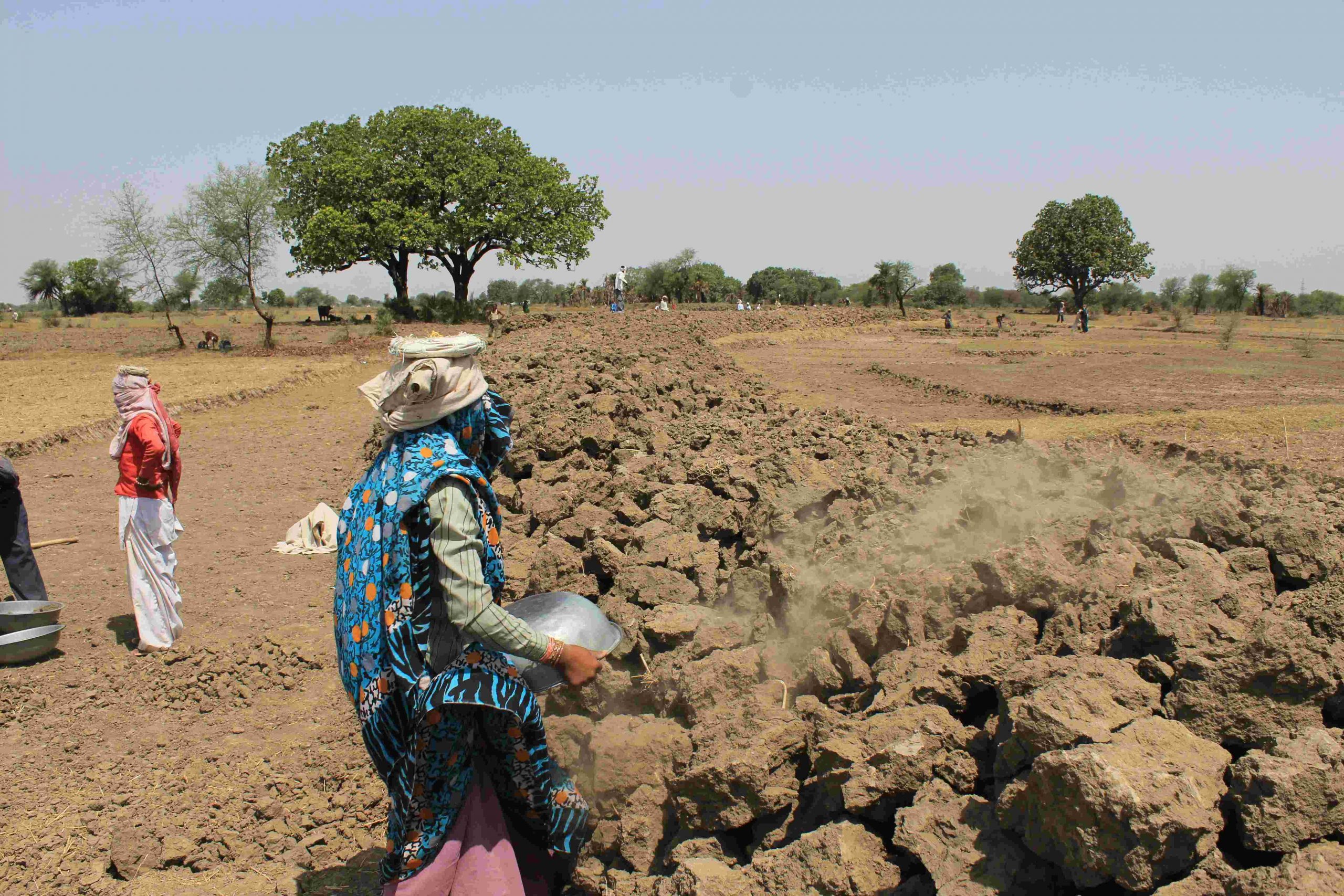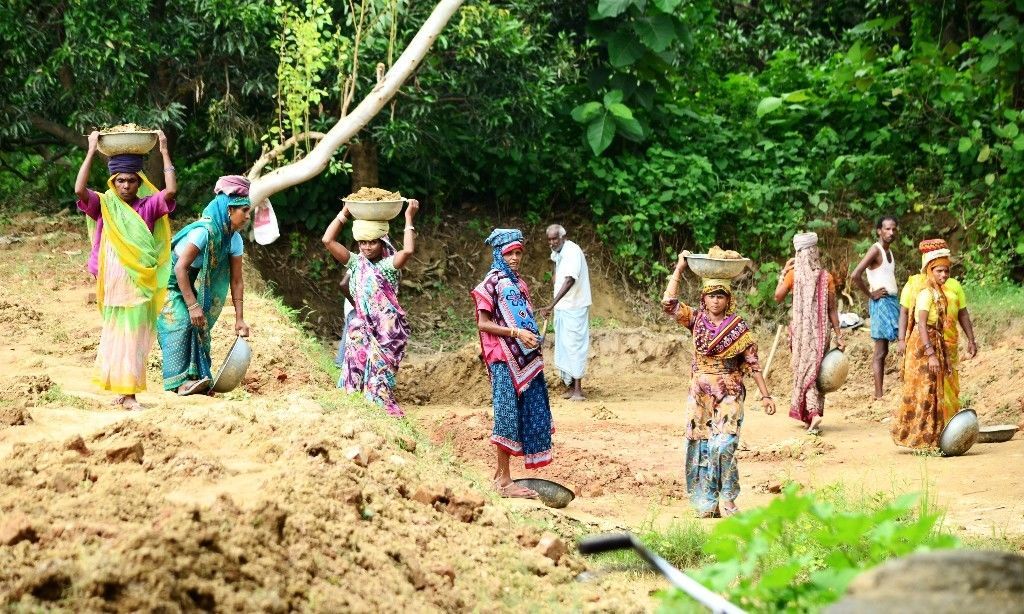NREGA Tracker: Nearly 90 per cent of the allocated NREGA budget for 2021-22 has been used up, with 5 months of the programme still remaining
The half-yearly MG-NREGA National tracker launched by PAEG today highlighted that 90 per cent of the allocated budget has been used up with 5 months of the programme still remaining and the remaining funds available can cover at most 13 days of employment per household till March 31, 2022. More details here.


The total budget allocation for MG-NREGA was 34 per cent less than the revised budget for the previous year. Photo By : Gaon Connection
In her opening statement at the joint press conference conducted by Peoples’ Action for Employment Guarantee (PAEG) and LibTech India, Jayati Ghosh, Indian development economist, said that MG-NREGA which has always been a safety net for both urban and rural India is now an enormous lifeline for all workers across the country. “This is not an economy that is looking for a speedy recovery despite what we get told by various people from the finance ministry and outside. The vast majority of livelihoods are still not just fragile but much lower than they were and are under distress,” she added.
The event discussed the key findings of MG-NREGA (Mahatma Gandhi-National Rural Employment Guarantee Act) National Tracker by PAEG, a group of activists, academics, and members of peoples’ organizations that have been advocating for the MG-NREGA since 2004. It also highlighted the findings of Libtech India’s study Heavy Wait: Wage Payment Delays in MG-NREGA by the Central Government across Caste and Payment Type from April, 2021 to September, 2021 on MG-NREGA wage payment delays by the central government.
The MG-NREGA National tracker is an attempt to closely monitor the performance of MG-NREGA by making some key metrics available in an accessible manner. It was started in 2020 on a half-yearly basis. It tracked MG-NREGA from April 1- September 31, 2021. The findings pointed out gaping loopholes in the MG-NREGA budget allocation and payments.

MG-NREGA budget for 2021-22 is 34 per cent less than previous year’s
It highlighted that the total budget allocation for MG-NREGA was 34 per cent less than the revised budget for the previous year. This was done by the central government despite the evident importance of MG-NREGA during the first wave of the pandemic, and the devastating economic impact of the second wave, the report said.
Read More: Labour activists demand daily wage hike for MGNREGA workers; write to PM Modi
While 90 percent of the budget has already been utilised, the remaining funds available can cover at most 13 days of employment per household till March 31, 2022.
Out of the total persondays of employment that were projected to be generated till September 30 this year, only 91 per cent has been generated while 13.25 per cent of the total households that demanded employment did not get employment under MG-NREGA.
Nikhil Dey, a former member of MG-NREGA council, while sharing the details of the MG-NREGA tracker mentioned that no data on unemployment benefits claimed or given to the workers in the Management Information System was shared by the government. “The data has to be aggregated from panchayat level offices individually,” he said.
Out of the total households employed under MG-NREGA, only 6.03 per cent of them were employed for 81-99 days whereas only 1.80 per cent were employed for 100 or more days. For the first six months of the year, 14.64 per cent of total payments are pending to be paid by the Government of India. Since the pandemic, concurrent social audits have been conducted in many states but their standards were not satisfactory, according to NREGA Sangarsh Morcha, a national platform of workers’ collectives, trade unions, organisations, and individuals engaged in public action on MG-NREGA.

Caste-based segregation of Fund Transfer Orders
The caste-based segregation of Fund Transfer Orders (FTO) has led to no benefits and has created caste and religious-based frictions, as revealed in the report Heavy Wait… launched by LibTech.
The Central government had issued a circular to change the payment system by separating them on the basis of caste of workers (SC, ST, and ‘others’) on March 2, 2021. The report found that it was brought in hastily and was also seen as a potential to target the universality of the program, as per Rajendra Narayanan, the lead author of the report.
Read More: 80% rural citizens reported not getting work under MGNREGA during the COVID-19 lockdown
The report also highlighted the trouble with the introduction of the Aadhaar Payment Bridge System (APBS) which has led to newer problems like misdirected payments and rejections due to Aadhaar mapping issues. As compared to account-based payments, these issues are much harder to resolve even for government and bank officials, the report found. The report also presented evidence based on the Central government’s own acknowledgment that insufficient funds had a direct bearing on delays in wage payments wherein 90 per cent of the allocated fund was already exhausted with five months left for this financial year. Thus, it pressed on an urgent need to increase budget allocation for timely payment of wages.
Answering a question regarding whether the delays and rejections due to digitised system of aadhar based payments contradict the much touted Digital India image, Narayanan said that while there have been many claims about the efficacy of aadhar linked payment system, there were however empirically no evidence to support the claim.
The report also highlighted the stage 1 and stage 2 delays in generation of FTO. The time taken to generate the FTOs by state governments is stage 1 whereas time taken subsequently by the central government to transfer wages is called stage 2. The report revealed that stage 2 for 71 per cent of the transactions exceeded the mandated 7 day period whereas it exceeded 15 days for 44 per cent of the transactions. Stage 2 for nearly two-thirds transactions in Jharkhand exceeded 15 days, while stage 2 for half or more than half of the transactions of Madhya Pradesh, Chhattisgarh, and West Bengal exceeded 15 days. It’s also important to note that no wage payments in West Bengal have been processed between August 15 and October 13.
Answering a question raised by the Gaon Connection regarding the difference in wage payment between BJP government states and Congress governed states, Narayanan said that it’s difficult to decide whether BJP ruled states are given a differential treatment by the Central government. “We do see a lot of delays in Jharkhand and Chhattisgarh but there is also delay in Madhya Pradesh which is a BJP governed state,” he added.

